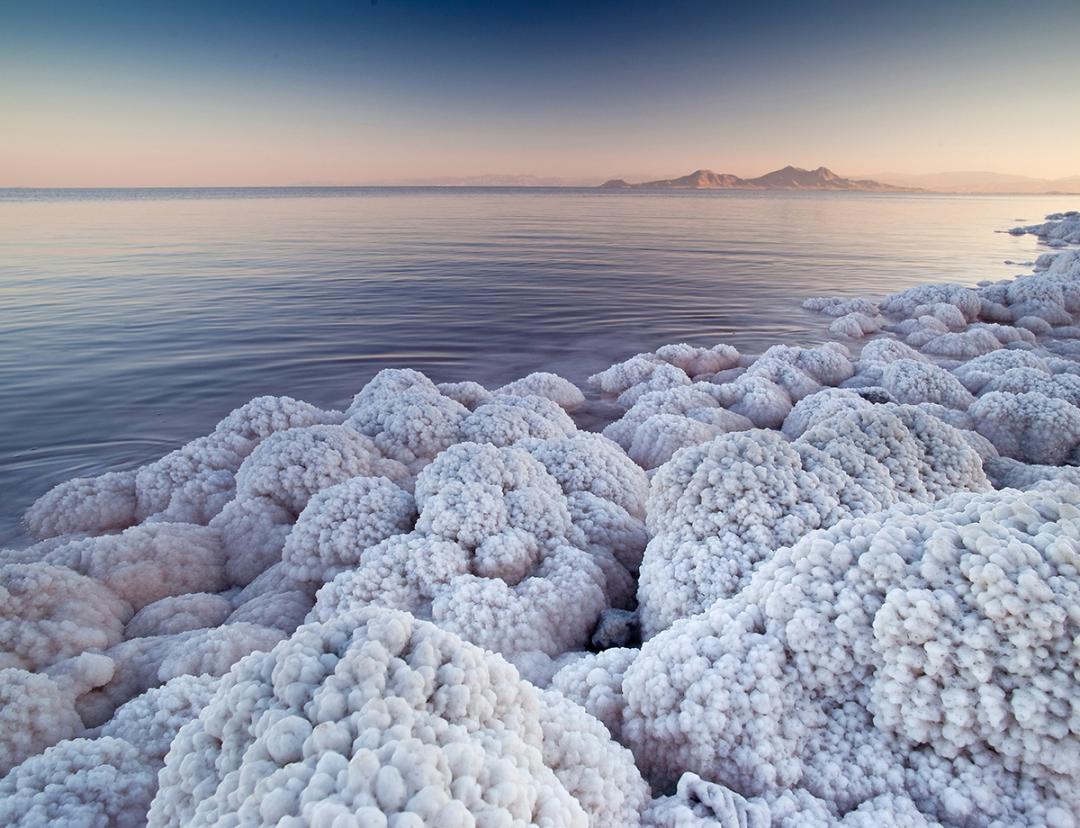Through water transfer and shrub planting projects, the Urmia Lake Restoration Project has managed to control and settle down 70% of salt particles on the lake's bed, according to the provincial director of ULRP at West Azarbaijan Province.
"The particles emanating from salt flats of Urmia, mainly spread across East Azarbaijan Province, are different from dust particles and will immediately destroy the vegetation when dispersed," Farhad Sarkhosh said.
The ULRP along with the provincial offices of the Forests, Range and Watershed Management Organization is responsible for identifying the hotspots and implement anti-desertification plans to stabilize the particles.
A salt lake or saline lake is a landlocked body of water with significantly high concentration (minimum three grams per liter) of salts and other dissolved minerals.
Desiccation of saline lakes will leave dry patches also called playa or salt flat which will cause salt storms as winds sweep over them. The clouds of airborne salt pose serious health hazards to the surrounding areas. When inhaled, the minerals might cause throat or lung cancer, infant mortality, decreased life expectancy and birth defects.
Salt flats are often found in deserts when the rate of evaporation exceeds that of precipitation.
In Urmia, once the largest salt lake in the world, climate change, combined with unmethodical dam construction and unsustainable agricultural practices, has lead to the emergence of salt pans. The ULRP was set up in 2013 to stabilize the lake's water level (Phase 1) and restore it to what it was more than a decade ago (Phase 2).
The first phase was completed in September 2016 and the second phase started shortly afterwards but has been progressing behind schedule reportedly due to unfavorable climate and lack of budget to carry out the plans completely.
The lake currency holds 2.13 billion cubic meters of water and its water level stands at 1,270.8 centimeters with an 18-cm decline from the same time last year, according to Sarkhosh.
Public Contribution
ULRP has also placed awareness-raising and educational programs on its agenda to help rescue the lake.
"Restoration efforts will not bear fruit without public cooperation," Sarkhosh said.
To meet the goal, school teachers in nine cities around Urmia's catchment area have been tasked to discuss in their classes the importance of efficiency in water consumption and modern irrigation methods as well as the dangers of the lake's desiccation. The official said 21 billion rials ($500,000) from ULRP's budget for this year has been earmarked to fund the educational scheme. Sarkhosh also noted that other capacities such as cyberspace and social media should be utilized to promote a culture of contribution to efforts to save the country's key water body.
"Urmia's dry-up will have irreversible consequences in the region, and exploiting modern platforms such as the digital world along with revival projects is required to guarantee its full restoration," he said.
He also suggested the use of computer games that have become popular among the youth for the purpose.
"By designing purposeful games, we can educate the young generation about water shortage and the depletion of groundwater reserves," he said.
He emphasized that without persuading farmers to adopt modern methods and grow more water-efficient crops in Urmia's drainage basin, the lake cannot be restored.
He did not mention, however, if any facilities have been envisaged for farmers to part with their long-used agricultural methods.


